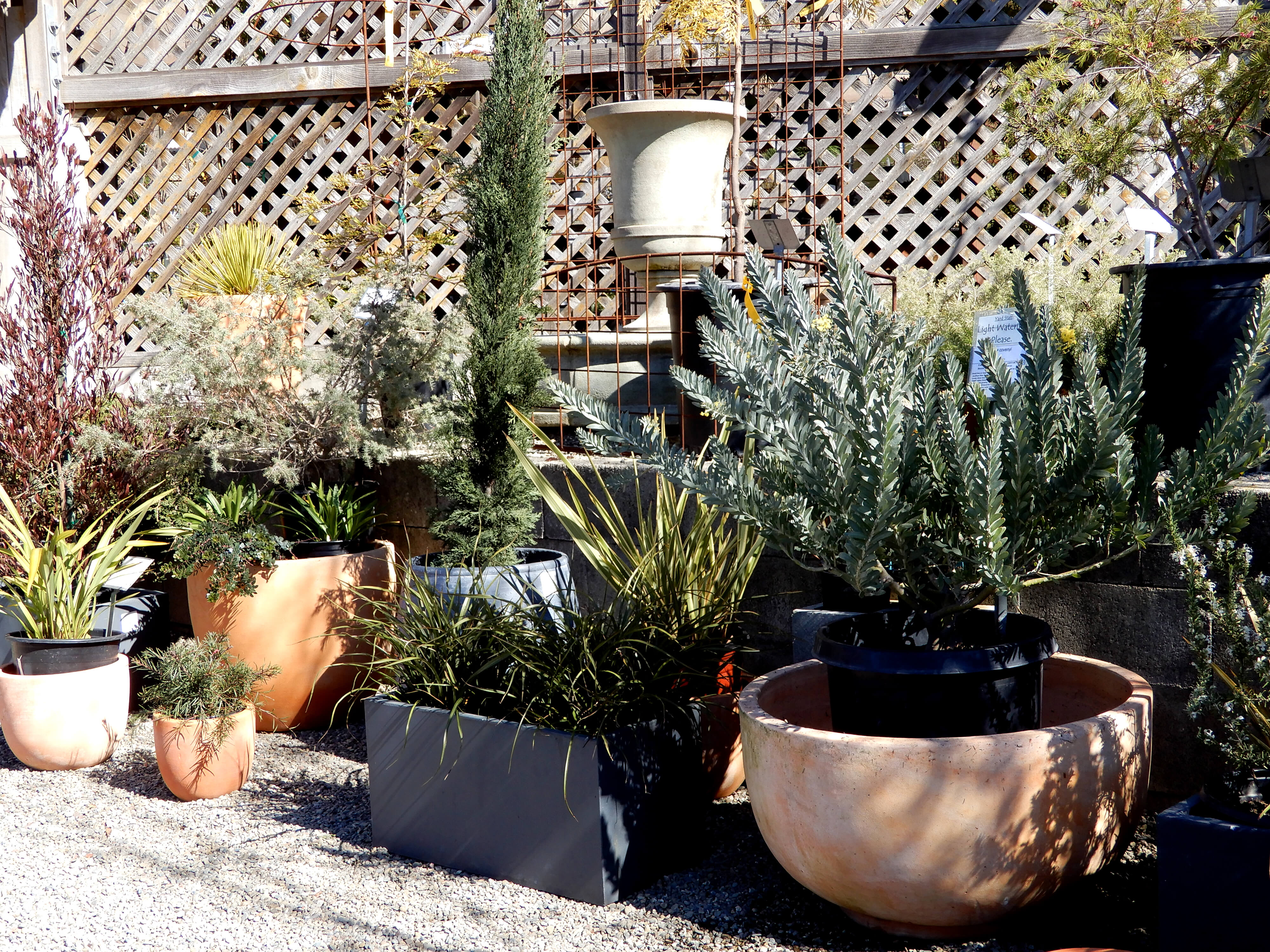We need to be mindful of where we’re living, and that dry cycles are not unprecedented in our natural history. The popularity of Mediterranean, Native, or Drought-tolerant landscapes seems to wax and wane depending on our available water, but it’s always good to brush-up on the virtues of xeric landscaping, and review some of practices for reducing water waste in the garden.
 To succeed with minimal water, much depends on plant choice. A bed of impatiens, a Japanese maple, or a bank of hydrangeas would never be considered drought-tolerant, no matter how well they’re treated in other respects. However, one can expand the subject of drought-tolerance to include plants that wouldn’t normally be in that category by taking some precautionary measures.
To succeed with minimal water, much depends on plant choice. A bed of impatiens, a Japanese maple, or a bank of hydrangeas would never be considered drought-tolerant, no matter how well they’re treated in other respects. However, one can expand the subject of drought-tolerance to include plants that wouldn’t normally be in that category by taking some precautionary measures.
For annual plants it’s important in this land of heavy clay to improve the native soil with organic matter. This can take many forms—your own compost, or a commercial composted bark product such as our FirMulch Soil Conditioner. These sources of humus will help newly developing plants or seedlings get their roots out into the soil to take advantage of available water. Growing your own humus can be done with a green manure such as clover, fava beans, ryegrass or any number of other cover crops. This is another excellent way of adding organic matter to highly mineral soils. Both of these techniques will encourage the development of healthy fauna to aerate the soil and allow for greater water penetration and root development.
For perennials and woody plants there should be something on top of the soil. Shredded Cedar Bark or the aforementioned FirMulch are both excellent general-purpose mulches for weed suppression and moisture retention. It is important to suppress weeds as they compete with the cultivated plants you’re trying to encourage. Without the aid of mulch, regular cultivation of the soil is required to remove weed seedlings before they become established.
In watering your plants, be sure that they are deeply soaked. This means that the soil is moistened to a depth beyond the root zone of the plant to encourage extensive root development that will enable the plant to withstand short dry periods without serious damage. Avoid frequent shallow watering that will encourage shallow rooting and in turn make the plant susceptible to dry spells. A good way to get water to the root zone with minimal runoff is with drip irrigation, or soaker hoses. Soaker hoses can be arranged in a layer of mulch or even underground; or moved as needed to slowly water specific areas of the garden.
We are full of suggestions. See our Dry Ideas section, or come talk to one of our nursery associates for more on this important subject.


